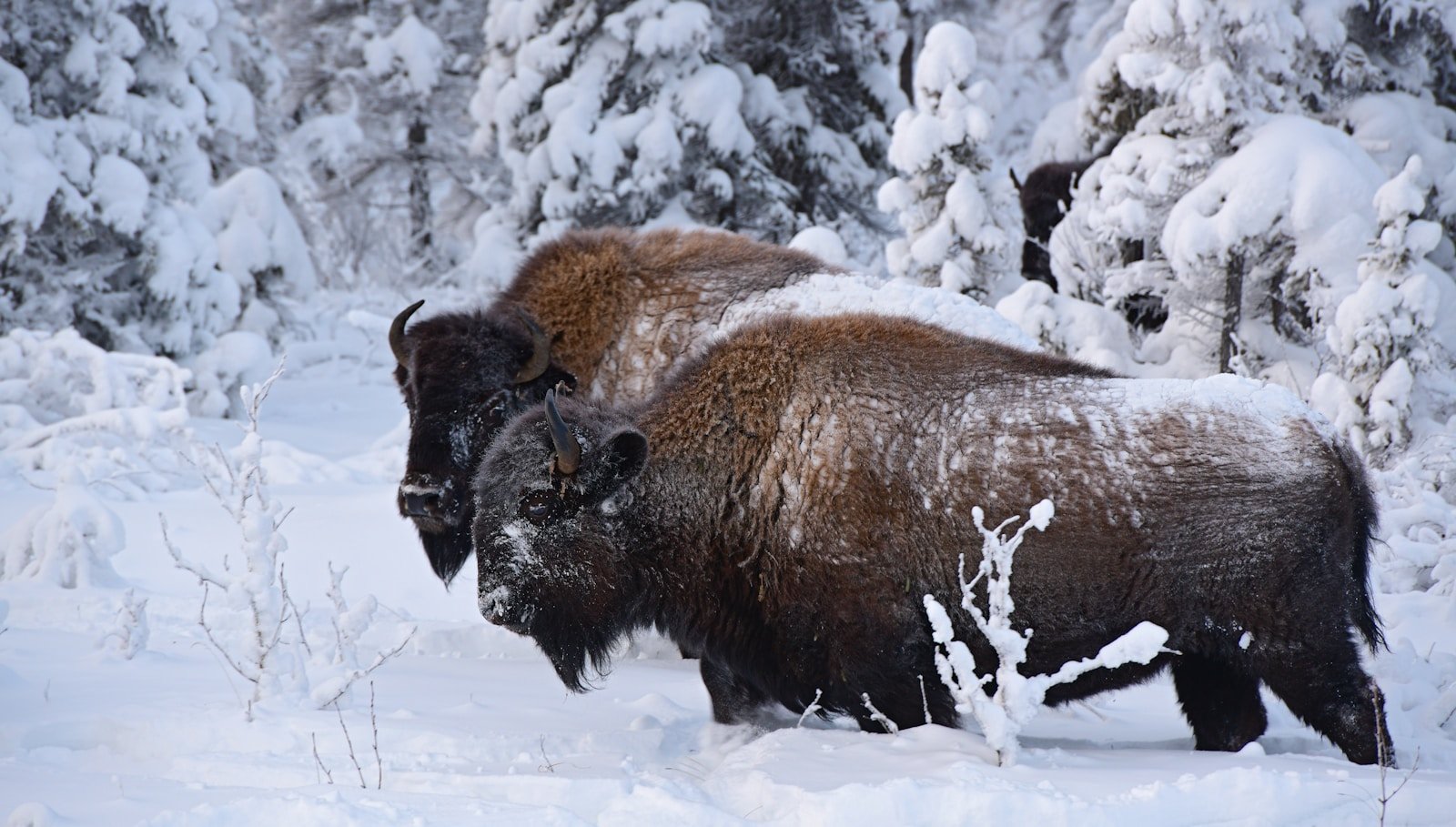As winter fades in Yellowstone National Park, controversy is heating up over the fate of its iconic bison. This season, 260 bison have already been sent to slaughter, while another 86 have been quarantined for potential live transfer to Native American tribes. Additionally, one male calf reportedly died during capture—raising further questions about the treatment of the animals.
The removals come amid an ongoing legal battle between Montana and the federal government over Yellowstone’s bison management. Conservation groups argue that current practices—slaughter and relocation—are outdated and disregard modern wildlife science and tribal sovereignty.
A Species Once Hunted to the Brink

Bison, once hunted to near extinction in the 19th century, have made a remarkable comeback within the protected boundaries of Yellowstone. But each winter, hundreds of them leave the park in search of lower elevations and food—crossing into Montana, where different laws and management strategies apply.
According to Montana Fish and Wildlife, bison were once widespread across the plains before westward expansion and widespread hunting drove them to near extinction. To prevent what some view as threats to livestock, including the potential spread of brucellosis—a disease affecting bison, elk, and cattle through infected fetal tissue. State and federal agencies have long engaged in controversial efforts to trap, slaughter, or relocate bison that migrate out of the park.
Conservation Groups Sound the Alarm

This winter’s removals have drawn condemnation from multiple conservation organizations. The Buffalo Field Campaign, a watchdog group that monitors Yellowstone bison, stated in a press release dated March 10: “The current Bison Management Plan (IBMP) continues to fail wild Buffalo, tribal people, community members and the American people who watch Our National Mammal, America’s public trust, be slaughtered each year. It is apparent this management structure is broken and Buffalo Field Campaign is not seeing anyone offering solutions.”
Conservation groups advocate for restoring the bison’s historical freedom to roam, particularly across the Great Plains and Yellowstone’s broader ecosystem. According to Yellowstone Forever and their Bison Conservation and Transfer Program, they are hoping to create a range where the bison can roam without fear of slaughter. This includes things like faster testing timelines, improved public awareness and involving local tribes in all aspects of bison stewardship.
Legal Dispute Complicates the Future

At the heart of the controversy is a lawsuit filed by the state of Montana Dec. 31, 2024 challenging the federal government’s bison management practices. The legal proceedings, still in early stages, could reshape how bison are handled when they cross the park’s boundaries. According to an article printed by the Sierra Club, when bison move outside of the borders of Yellowstone National Park they could pose a risk of spreading brucellosis to livestock. Such an outbreak could have serious consequences for Montana’s ranching industry.
Meanwhile, Native American tribes have stepped in with offers to adopt and steward live bison as part of ongoing cultural and ecological restoration efforts. The 86 quarantined animals may be transferred to tribal lands if they pass disease screening. Such efforts are widely praised as a more humane and culturally meaningful alternative to slaughter.
A Call for Modern Solutions
Advocates argue it’s time to move beyond outdated management models that treat bison more like livestock than wildlife.
As court proceedings continue and more bison face uncertain futures, conservationists are urging the public to speak out and support more progressive management practices.
For now, the fate of America’s last wild bison herd hangs in the balance—caught between legal disputes, outdated policies, and the hope of a better path forward.






